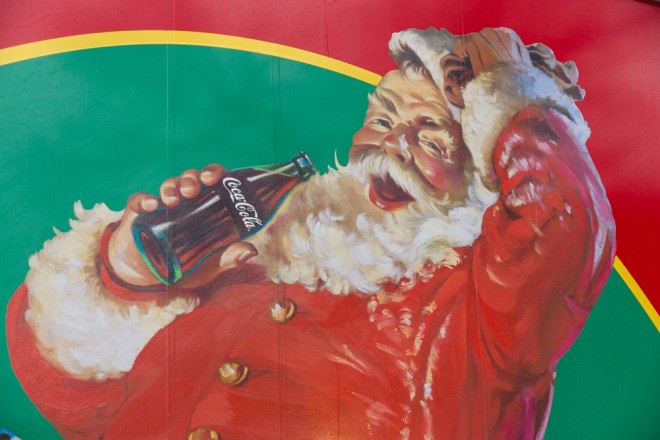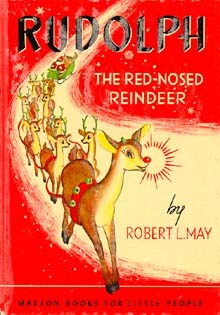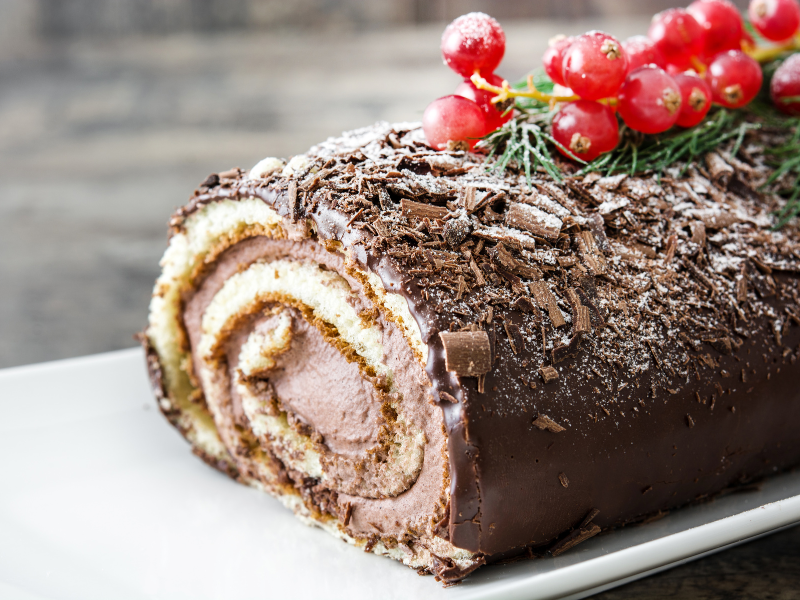
From gift wrapping to Christmas trees, department store Santa’s and beyond, what started as a religious holiday has taken on commercial significance.
Entrepreneurs, marketers and businesses large and small have certainly all played a role. But how did Christmas become so commercialized? Read on for a detailed overview.
Christmas Ornaments
It was F.W. Woolworth who first brought glass ornaments from the German cottage industry to the mass market in the US. In 1880, $25 worth of hand blown glass ornaments were purchased for his variety store in Lancaster, PA – all of which sold within two days.
Fast forward to ten years later and more than 200,000 glass ornaments made from more than 6,000 recorded designs, each by individual families, were being imported into the US.
The rest is, as they say — history.
Christmas Trees
The first documented appearance of a Christmas tree in the United States traces back to 1747 in Bethlehem, PA. This particular tree stood within the confines of the Moravian Church settlement, symbolizing the festive spirit of the community.
Rather than resembling the lush evergreens we’re familiar with today, this tree was fashioned from a wooden triangle and adorned with evergreen branches, marking a humble beginning for a tradition that would later captivate households nationwide.

Santa Claus – as We Know Him
In the early part of the 20th century, Santa Claus (otherwise known as “Sinterklaas” in Dutch) was rather spooky looking and certainly not the jovial fella’ we’ve all come to know and love in modern times.
So what changed?
Nothing really – other than the influence of Coca Cola and some well executed holiday marketing.

Coca Cola ads featuring Santa Claus first began in 1920 in the Saturday Evening Post. By 1931, Santa was making appearances in Coca Cola ads in popular magazines, but a more wholesome Santa was desired.
It was then that Coca Cola commissioned an illustrator by the name of Haddon Sundblom.
That year, in 1931, a more jolly Santa Claus appeared in National Geographic, Ladies Home Journal, and the New Yorker among others.
Sundblom’s work and his version of Santa Claus (pictured above) in those years is now some of the most desired depictions of holiday advertising (and Santa Claus himself) for Christmas collectors and advertising collectors alike.
The original artworks are housed in the Coca Cola archives and they have since been exhibited all over the world.
Rudolph
 Ah, our “deer” Rudolph. This little guy wasn’t born under a hemlock tree in the forest. Oh no. Our dear Rudolph (who was almost named Reginald) was born — at Montgomery Wards.
Ah, our “deer” Rudolph. This little guy wasn’t born under a hemlock tree in the forest. Oh no. Our dear Rudolph (who was almost named Reginald) was born — at Montgomery Wards.
Yes, that’s right. He’s another example of genius marketing, timed just right. Rudolph was born from a massive marketing campaign in 1939 in a book written by a company advertising copywriter by the name of Robert L. May.
The purpose? To drum up newspaper coverage.
The book Rudolph the Red Nosed Reindeer was authored by May and was then given away for free. (More than 2 million copies were distributed during a time when 50,000 was considered huge).
“Then how all the reindeer loved him, as they shouted out with glee, Rudolph the Red-Nosed Reindeer . . . you’ll go down in history.”
Truer words were never spoken.
Black Friday
Black Friday stemmed from the tradition of department store parades sponsored around Thanksgiving that were meant to kick off the holiday shopping season and push consumers into stores.
The term “Black Friday” first started to appear in the mid 1960’s, but didn’t really catch on until about two decades later in the 1980’s.
The first documented use of the term was in 1961 in a statement made by Denny Griswold of Public Relations News:
“In Philadelphia, it became customary for officers to refer to the post-Thanksgiving days as Black Friday and Black Saturday.
Hardly a stimulus for good business, the problem was discussed. He recommended adoption of a positive approach which would convert Black Friday and Black Saturday to Big Friday and Big Saturday.”
As you can see, those suggested terms never caught on. However, in the mid-80’s, retailers began to divulge that the term was actually in reference to the day after Thanksgiving being the first day profits would move out of the red – and into the black. Ka-ching!
IMAGE
Key Dates in Black Friday’s History:
- Mid-1960s: Term “Black Friday” starts appearing
- 1961: First documented use by Denny Griswold
- Mid-80s: Retailers adopt the term with a profit-related explanation
Cyber Monday and Small Business Saturday
When it comes to Cyber Monday, this too was birthed from marketing by a division of the National Retail Federation, Shop.org, in 2005.
“In 2010, the Small Business Saturday promotion was created and sponsored by American Express, who registered the URL SmallBusinessSaturday.com and registered the trademark for the term Small Business Saturday,” according to SmallBusiness.com.
Candy Canes and Yule Log — And Cake
When it comes to holiday treats like candy canes and the Yule Log, both have a long history dating back centuries.
According to WhyChristmas.com:
“The Christmas Candy Cane originated in Germany about 250 years ago. They started as straight white sugar sticks. A story says that a choirmaster, in 1670, was worried about the children sitting quietly all through the long Christmas nativity service. So he gave them something to eat to keep them quiet.”
And History.com reports:
“The history of the Yule log cake stretches all the way back to Europe’s Iron Age, before the medieval era. Back then, Celtic Brits and Gaelic Europeans would gather to welcome the winter solstice at December’s end. People would feast to celebrate the days finally becoming longer, signaling the end of the winter season. To cleanse the air of the previous year’s events and to usher in the spring, families would burn logs decorated with holly, pine cones or ivy. Wine and salt were also often used to anoint the logs. Once burned, the log’s ashes were valuable treasures said to have medicinal benefits and to guard against evil.”

Shopping Mall Santas
Shopping Mall Santas started in 1841 at a Philadelphia store that had a life-size model of a Santa Claus that drew children to it. This spawned a trend in which store owners offered opportunities to see a real “live” Santa.
Scroll down in this story for more and check some other references to see if we can find the name of that store in Philadelphia. R.H. Macy of Macy’s in New York City was one of the first department store owners to construct special holiday presentations.
And in 1862, he was the first to feature an in-store Santa for children to visit. By the 1890s, the Salvation Army had begun the practice of sending “Santas” into the streets of New York City to solicit donations to pay for holiday meals for the needy.

Christmas Cards
Christmas cards, now synonymous with the festive season and representing a flourishing multi-million dollar industry, have historic roots.
The tradition harks back to the year 1843, when the concept of sending season’s greetings took on a commercial hue. Sir Henry Cole, an English civil servant and inventor, is credited with commissioning the first commercial Christmas card.
This initiative provided a convenient means for people to send holiday wishes without writing lengthy personal letters, catalyzing a practice that still thrives today.
Gift Giving
The act of exchanging gifts during the festive season is steeped in ancient traditions. As the Christian Science Monitor reported, gift-giving is not solely a modern or Christian custom but finds its origins in pagan rituals celebrated during the winter solstice.
These ancient ceremonies aimed to ward off the cold, dark days and beckon a prosperous new year.
Additionally, the tradition of Hanukkah, commemorating the miracle of the oil in Jewish history, features the exchange of twelve gifts, further accentuating the season’s association with generosity and gratitude.
Yule Log TV Program
In 1966, a novel idea emerged from WPIX-TV, Channel 11, in New York City. Seeking to offer viewers a cozy, festive ambiance, they filmed the crackling fireplace of then-Mayor John Lindsey at Gracie Mansion—the official mayoral residence.
This broadcast, complemented by soothing easy-listening music, was a departure from their regular programming, even leading to the cancellation of advertising and a roller derby show.
The innovative concept was well-received, cementing the burning Yule Log as an iconic representation of holiday warmth and comfort for countless viewers.
Christmas Cookies
About the tradition of Christmas Cookies, The Culinary Life noted:
“Cookies have been around a long time (they probably originated as drops of grain paste spilled on hot rocks around a fire), but they became associated with Christmas in Europe in the 1500s. Gingerbread was a similar food, but laws restricted its baking to guildsman, however at the holidays these regulations were relaxed and people were allowed to bake their own at home, making a very special once a year treat.”

Christmas Dinner
When it comes to the tradition of Christmas Dinner, The Mirror reported:
“The rich would have eaten goose and woodcock for Christmas dinner and, with the king’s permission, swan. The birds were covered with butter and saffron and then roasted. The poor could sometimes get goose from the Church, although it would cost up to 7 pence – then around a day’s wages. Venison was also on the menu for the rich and sometimes the poor would be allowed to have the deer’s leftover parts – such as the heart, liver, tongue, ears and brain — known as ‘umbles. Mixed with whatever else a cook could get, they were made into a pie — known as ‘umble pie.”
Elf on the Shelf
Emerging as a contemporary holiday tradition with polarized reception, the Elf on the Shelf dates back to 2005.
Carol Aebersold, the brain behind this inventive concept, penned and self-published a story about a diligent elf dispatched by Santa Claus to monitor children’s behavior in the lead-up to Christmas.
Along with the narrative, a toy elf accompanies the book, which has since found a place in numerous households across the nation.
Depending on personal perspective, this elf is either seen as a delightful game for children or a somewhat eerie holiday overseer.
Store Sponsored Parade
As mentioned earlier, store sponsored parades were from the beginning a tradition driven by marketing more than by any other motivation.
But the tradition did not start with the store now most associated wit a famous holiday parade. As History.com explained:
“The idea of a store-sponsored Thanksgiving parade did not originate with Macy’s, however, but with Philadelphia’s Gimbel Brothers Department Store, which first staged a Thanksgiving procession in 1920 with 50 people, 15 cars and a fireman dressed as Santa Claus who ushered in the Christmas shopping season.
Like Macy’s, J.L. Hudson’s Department Store in Detroit also planned a similar event in 1924. In New York, however, the only Thanksgiving parade that had previously passed through the city’s streets was its peculiar—and to many, annoying—tradition of children painting their faces and donning tattered clothes to masquerade as “ragamuffins” who asked “Anything for Thanksgiving?” as they begged door-to-door for pennies, apples and pieces of candy.”
Wrapping Paper
Wrapping paper in some cultures, most notably Japan and Korea, goes back many centuries. But here in the West, wrapping presents in pretty paper dates back at least to the Victorian era. Today it is a $2.6 billion industry.
- Dates back to the Victorian era in the West
- Centuries-old tradition in Japan and Korea
- Today’s market value: $2.6 billion

Department Store Window Displays
As Zady reported:
“R.H. Macy of Macy’s in New York City was one of the first department store owners to construct special holiday presentations. And in 1862, he was the first to feature an in-store Santa for children to visit. Several years later, in 1874, he created one of the first major holiday window displays with a collection of porcelain dolls from around the world and scenes from Harriet Beecher Stowe’s ‘Uncle Tom’s Cabin.’”
Santa’s Reindeer
And where did Santa’s reindeer originate? Well, website AltogetherChristmas.com said:
“The first known written account of reindeer in association with the legend of Santa Claus occurred in 1821. That year, New York printer William Gilley published a sixteen page booklet titled A New Year’s Present, to the Little Ones from Five to Twelve Number III : The Children’s Friend by an anonymous author. In the book, reindeer are introduced into the Santa Claus narrative”
As a summary of the myriad ways Christmas has been commercialized throughout history, the following table provides a concise overview of key elements, their origins, main contributors, and their enduring impact on the festive season:
| Commercial Element | Historical Origin | Main Players | Impact/Significance |
|---|---|---|---|
| Christmas Ornaments | 1880 from Germany | F.W. Woolworth | Introduced glass ornaments to mass market |
| Santa Claus | Early 20th Century | Coca Cola, Haddon Sundblom | Modern jovial Santa image |
| Rudolph | 1939 | Montgomery Wards, Robert L. May | Marketing campaign led to iconic character |
| Black Friday | 1960s | Denny Griswold | Kicked off holiday shopping season |
| Cyber Monday | 2005 | Shop.org | Online shopping boost post-Thanksgiving |
| Candy Canes | 250 years ago in Germany | N/A | Popular Christmas candy with religious origins |
| Shopping Mall Santas | 1841 | Philadelphia store, R.H. Macy | Created a trend for kids to see live Santas |
| Christmas Cards | 1843 | Sir Henry Cole | Started a multi-million dollar industry |
| Elf on the Shelf | 2005 | Carol Aebersold | Fun holiday ritual for homes |
| Store Sponsored Parade | 1920 | Gimbel Brothers, Macy’s | Marketing-driven tradition to start shopping season |
| Wrapping Paper | Victorian era | N/A | Turned into a $2.6 billion industry |
| Santa’s Reindeer | 1821 | William Gilley | Introduced reindeer to the Santa narrative |
Santa, Sundblom Santa Images via Shutterstock, “Rudolph, The Red-Nosed Reindeer Marion Books” licensed under Fair use via Wikipedia.
This article, “How Did Christmas Become Commercialized?” was first published on Small Business Trends